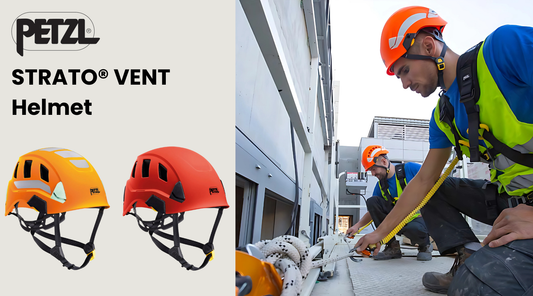Practice Safety When Climbing to Prevent a Fall
Article
Arborists have one of the most interesting jobs around, and it can sometimes be one of the most dangerous if proper precautions aren’t taken. The same goes for recreational tree climbers.
When on the job or out for some quality nature time, safety is of the utmost importance. Using quality gear and practicing some key climbing techniques will work together to help keep your climb as safe as possible.
Climbing safely is the key to your safety
It’s important and required that climbers undergo proper training before entering service, and there are some key points to always remember once training ends.

Whether you’re removing a tree or working to make the tree and surrounding areas safe, these are the basic safety tips that will keep you, well, safe:
- Inspect the tree to make sure it’s safe for climbing. The last thing you want is to make it half way up only to find that the tree isn’t. Make sure to watch for nests or other forms of wildlife, too.
- Stay on the rope. This is the best way to keep from a potential fall.
- Do your best to work in safe weather conditions. While this isn’t always possible, it’ll make your job much easier and safer.
- Watch where you climb. Any misplaced feet could cause you to slip!
- Make sure you’re properly trained before using any tools in the tree. You don’t want to end up damaging your rope—or yourself—if you’re not trained with a saw, for example.
This is just the tip of the safety iceberg—make sure that you undergo proper training, whether it’s on-the-job training or through a school, before you climb. This one cannot be stressed enough. Training will provide you with all the above safety tips and so much more!
Penn State University, PA, offers a three-day Tree Climbing School course that teaches safe climbing and maintenance techniques. Mid-State Technical College, WI, offers an Urban Forestry Technician program.
Texas A&M University, TX, offers a Forest Resource Management program and the University of California-Berkeley, CA, offers a program called the Center for Forestry.
Lately, arborists have become more in demand as the need to keep trees clear of power lines—among many other things—has increased. With this uptick in demand came better climbing gear for workers, and this gear is an integral part of keeping safe.
Protect yourself with quality gear
The gear required for climbing is actually there so that you’re climbing up it rather than the tree and its branches. Your gear must be the best quality to ensure that it doesn’t break or catch while you’re in the middle of a climb.

When climbing, it’s important to always wear a helmet. You need to protect your head from anything that might fall down at you while you’re working. Wear safety glasses to protect your eyes from debris as well.
Remember back in the day when your mom told you to tie your shoes mid-run? Well, make sure your boots are tied before you start climbing. The last thing you want is to catch a loose lace and slip.
Make sure all climbing harnesses fit properly and are quality products! Check on your bungees and hooks to make sure nothing snags or needs replacing before you start climbing.
At shopmtn.com, you’ll only find the best climbing gear so you can get the job done safely!
Sources:
http://treeclimbing.com/index.php/climbing/rules



